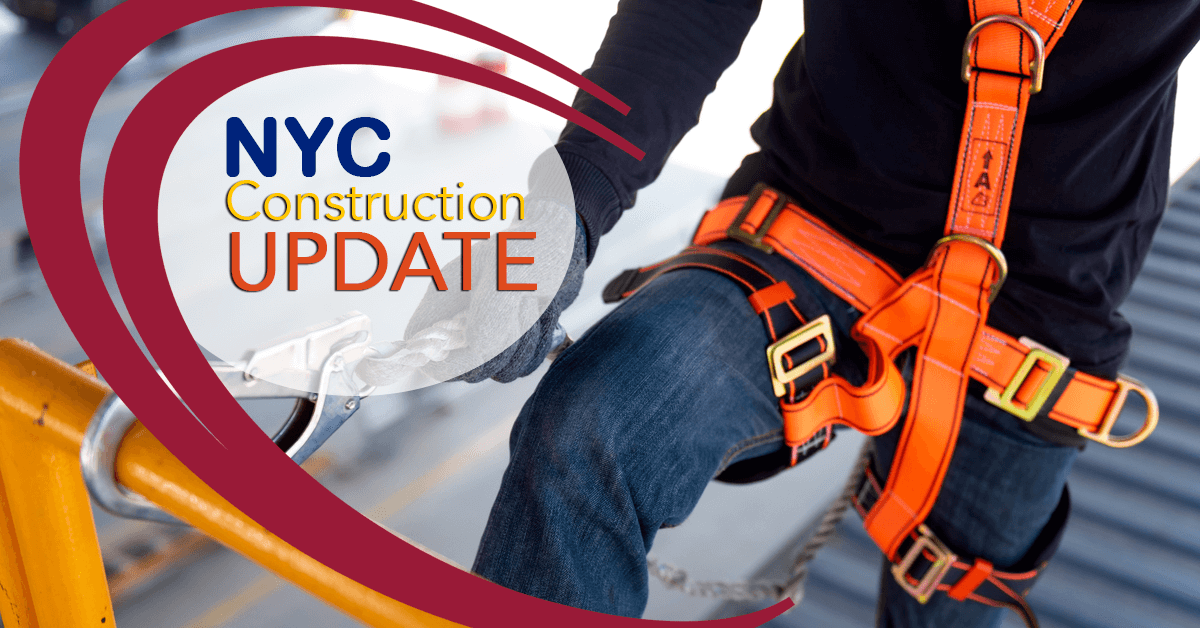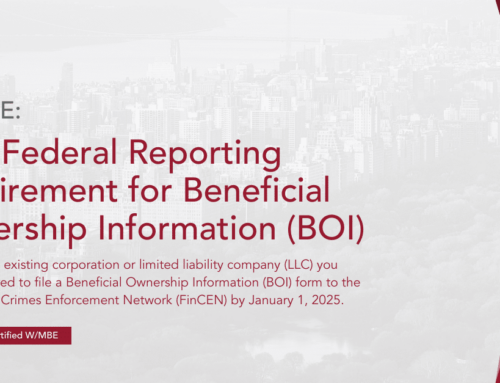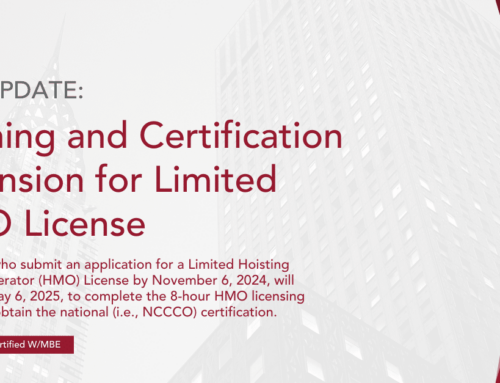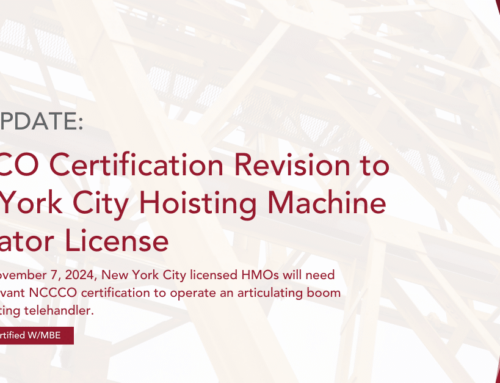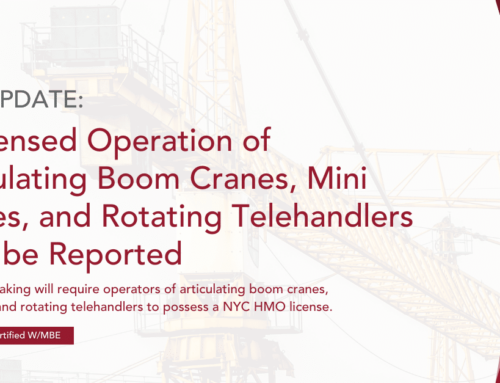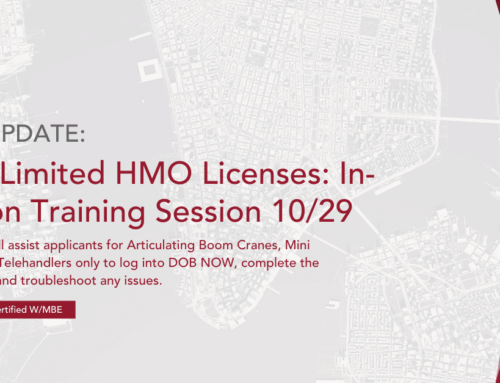NYCDOB REMINDER: Concrete Safety Managers, Construction Managers, Superintendents, and Project Managers Should Maintain Best Practices to Prevent Structural Damage to Concrete During Cold Weather Placement
The following is a Service Notice from NYCDOB:
Cold weather concreting practices must be instituted when the average daily air temperature is less than 40° F for more than 3 consecutive days or when the air temperature is 50° F or less for more than 12 hours in any 24-hour period.
To prevent concrete damage due to freezing and ensure proper mixture, follow these safeguards:
Planning
- Conduct pre-construction meetings with the concrete supplier
- Maintain a cold weather concreting plan Inspection
- Record surface and air temperatures and ensure no ice is present within forms prior to placement.
- Inspect the surface (subgrade, form, rebar, etc.) that is in contact with fresh concrete to ensure temperature is within limitation.
Protection
- Provide protection immediately after concrete placement. Provide extra protection to formwork corners and edges, which are vulnerable to freezing
- Maintain curing conditions that resemble normal strength development
- Remove insulation and protection slowly at the end of the required period so surface temperature decreases gradually during the subsequent 24-hour period
Temperature
- Limit rapid temperature change and monitor concrete temperature for a minimum of 24 hours after concrete is placed.
- Cold weather mix designs may require prior approval by the EOR
- Use of accelerators, hot water, and aggregates must be approved by the EOR
- Field inspectors from the concrete testing lab must record temperatures during concrete placement. Special inspectors from the concrete testing lab must record the temperature of the concrete in place in time intervals
For additional information, refer to ACI 306R, ACI 318, NYC BC 2022.
You can download the Service Notice here…
###
Structurally Compromised Building Report Filing Process
Owners of buildings that are potentially structurally compromised are required by Article 217 of the New York City Administrative Code to hire a New York State licensed design professional to inspect the structure within 60 days of the building becoming structurally compromised and file a report with the Department of Buildings within 30 days after the inspection.
You can download the entire Service Notice here…
###
New York Construction Solutions
Cahill Strategies has experience representing large general contractors, construction management firms, owners, and developers. A key to our success is our vast network of decision makers that we have the ability to reach on your behalf. Additionally, our team is involved in the legislative and regulatory processes at the Federal, State, and Local levels which affect the construction industry in New York State, New York City, and surrounding regions. We possess the knowledge of industry standards and trends, along with key relationships that will bring your projects to fruition. Read more…
Receive a Complimentary Copy of our NYC DOB Chapter 33 Code Review Book!
Cahill Strategies has developed a comprehensive guide to NYC DOB’s new Chapter 33 building code revisions, and we want you to have it in your back pocket!
When you sign up for our construction alerts, we’ll send you a complimentary copy of our book!
Cahill Welcomes Bob D’Alessio

As Cahill Strategies’ Director of Construction Code and Safety, Bobby brings an unparalleled level of knowledge and practical experience to our growing construction solutions practice area.

